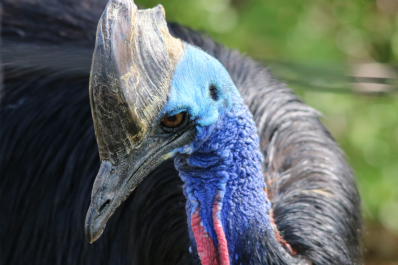Semi-colons: cassowary
The Grammar Bit!
Read the three sentences opposite. You’ll notice that each sentence consists of two main clauses. Remember – a main clause (sometimes called an independent clause) contains a subject and a verb and makes sense on its own.
You’ll also notice that the main clauses in each sentence have been separated by a semi-colon (;). A semi-colon is used when the statement made in the second clause is closely related to the first. Visualising a traffic light can help you understand the role of a semi-colon within a sentence.
A full stop is a red light. This makes you stop completely.
A comma is a green light. You look at it, but you don’t stop.
A semi-colon is an amber light. It makes you stop, but not for long.
With your talk partner, discuss why you think a semi-colon has been used in each of the scintillating sentences opposite. How exactly are the main clauses related?
Scintillating Sentences
1) The eldest cassowary chick was impressed by her younger brother’s bravery as he ventured alone into the rainforest; the chick’s concerned father was not.
2) Some forest tribes believe that cassowaries are the cousins of humans; others believe that the flightless birds are reincarnated humans.
4) Fruit-eating cassowaries are important to the health and growth of Australia’s rainforests; therefore, it is vital that they are protected.

Did you know…?
Scientists think that the hollow casque on a cassowary’s head helps to amplify the low-frequency sounds that it makes and improve its ability to communicate in dense rainforest.

 Sign in
Sign in

